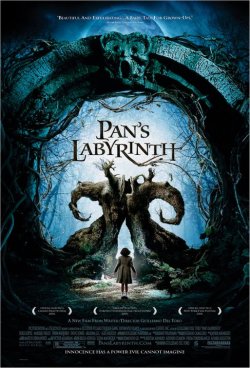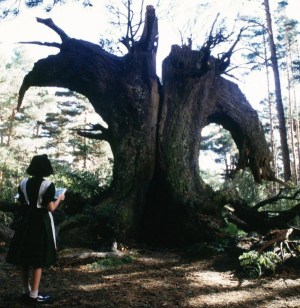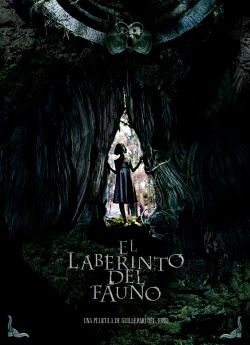As much as I’ve wanted to write about Pan’s Labyrinth, it hasn’t happened, so you’ll have to wait until its DVD release for a proper essay. (I have lots of ideas, but the movie’s details have faded so much that anything I write would be either too vague or filled with errors. Even more than normal.)
For now, I’ll note that I was struck by something writer/director Guillermo del Toro said in an interview:
Question: “So often in fairy-tale analysis, there’s a tendency to read any story of a young girl as a psychosexual parable, but this film specifically doesn’t go that way.”
Answer: “Not at all. I consciously avoided it, not out of prudishness – though I probably am prudish – but out of the same reason why I tried to avoid the myth of vampirism in Cronos through using the most completely unerotic window I could; I tried to approach it like an addiction. In Pan’s Labyrinth, I knew that the psychosexual angle was really tired; it felt very 1980s for me, and I felt this was a movie about a girl who was on the threshold of making a choice, where she could cease to be a girl, but it was not about sexual identity.”
Perhaps he should have told that to the movie’s designers and marketers. Take a look at these images and say with a straight face that they don’t bear a striking resemblance to female genitalia.
Click here to open a detail of the above poster – a bigger vagina to swallow you!
I’m not saying that this obvious fixation on the vagina is incongruous with del Toro’s statement. There’s a strong argument to be made that the movie is about Ofelia living in the “real” world while wanting to join her unborn brother in her mother’s womb. (She is not unlike the protagonist of The Tin Drum, who refuses to physically mature after observing some of the world’s horrors.) Hence: Ofelia at the labia of the Earth/Mother. That fits with del Toro’s claim that the movie is not about Ofelia’s sexuality.
Now, when that budding girl enters the tree and encounters a repulsive, spewing frog, that’s another matter entirely. From Bruno Bettelheim:
“The frog’s ability to blow itself out when excited arouses, again unconsciously, associations to the penis’ erectability. Repulsive as the frog may be, as vividly described in ‘The Frog King,’ the story assures us that even an animal so clammily disgusting turns into something very beautiful, provided it all happens in the right way at the right time.”




